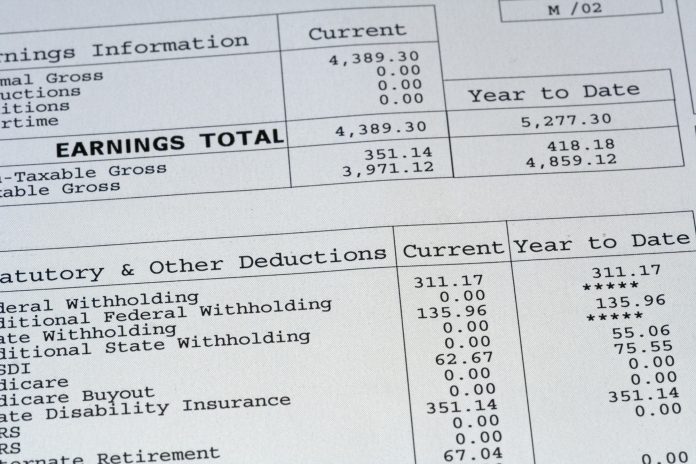If you run a small business, then you’ll need to pay your employees periodically. While you may think it’s as simple as putting down the hours they’ve worked, their rate, and the total check amount, it’s actually more complicated than that.
If you’re wondering what’s included on a pay stub, read further to find out so you have everything in order.
What’s Included on a Pay Stub?
The Fair Labor Standards Act (FLSA) requires that you keep accurate records of how much your employees have worked and for how much. Here are the main elements of pay stubs.
The Date Range
The first piece of information you need is the pay period and the pay date. The pay date isn’t the day you issue the pay stub. Rather, it’s the day your employees can expect to receive their wages.
Total Hours Worked and Pay Rate
This is something we touched upon in the introduction. You need to state how many hours they worked that pay period and for how much, including overtime.
Voluntary Deductions
If your employees opt to contribute to their health insurance or 401K, you’ll need to put that information in this section.
Taxes
You’ll have to include the federal state tax, as well as the Social Security and Medicare taxes. Plus, you’ll have to include all applicable state and local taxes. This can all become a handful.
When you use a check stub maker, all you have to do is fill the information in and it’ll take care of everything else for you.
Garnishments
Not every employee will have this, but some will. For example, they may need to pay child support or a tax bill. This section of the pay stub will state how much is being taken out of the paycheck.
Back Pay
This won’t be on every pay stub either. But if you owe your employees money for any reason (such as adjustments in their employment statuses), you should list it here.
Gross and Net Pay
You should have a section for how much they’ve earned before deductions, and one for after. The gross pay should be what you agreed to pay your employees in the contract. Net pay is what they take home after deductions and taxes.
Year-to-Date Earnings
This should be at the end of the pay stub and will show how much your employees have earned from January 1st of that year to the current date, both gross and net. It can also show all the deductions for the year.
Make Sure Your Pay Stubs Are OK
Now that you know what’s included on a pay stub, you can ensure you pay your employees correctly. That way, you avoid any legal troubles in the future. Take the time to learn all the important elements of pay stubs so you won’t have to waste your time and money later on.
If you need more advice on running your business, then browse our business section for more articles.

